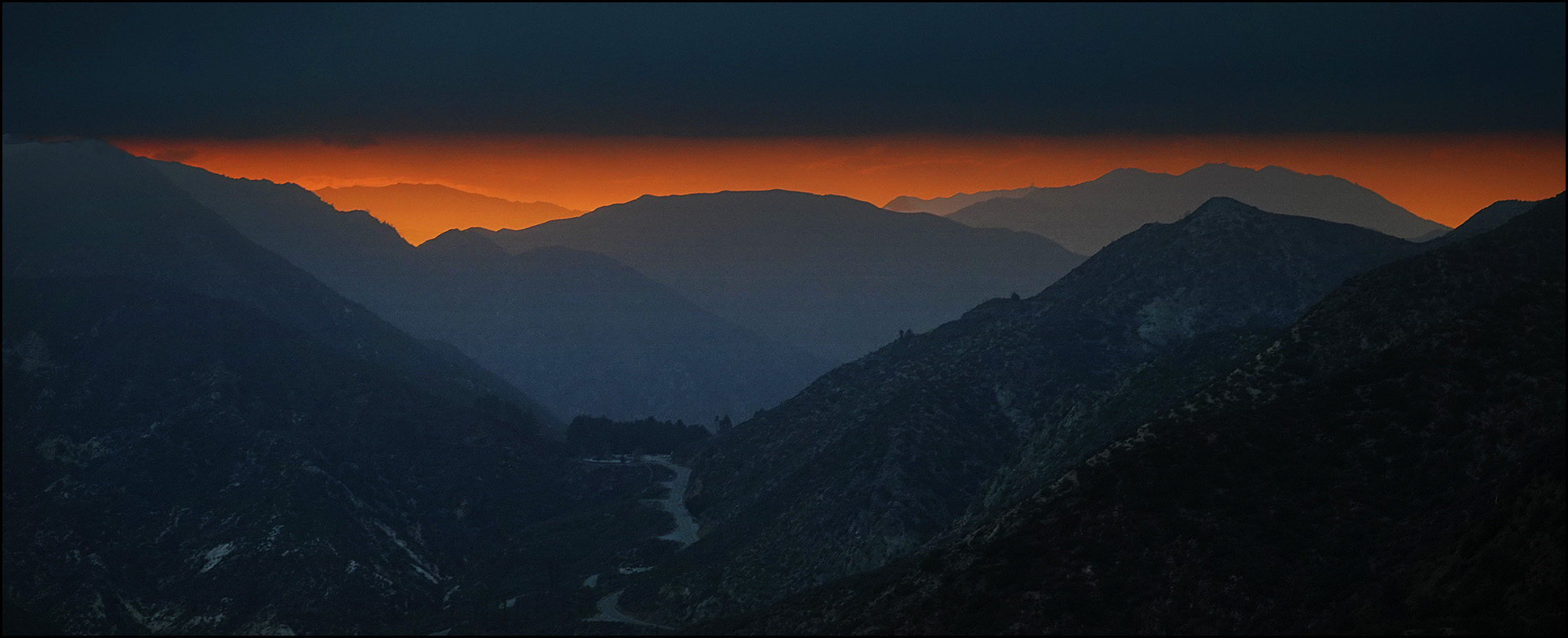Today’s photo was taken near sunset in the Angeles National Forest. When I first saw it on the computer when I got home, I didn’t care all that much for it. In fact, I almost didn’t bother saving it. But I did, and ever since it’s been sitting in the lunchtime queue, where I see it every day.
The black blob running across the top is cloud cover. It never rained that day, but the clouds were threatening and dark most of the time, and got even darker toward dusk. The result is a thin band of orange sunset, and that’s what either makes or breaks the picture. At first I disliked it, but that single patch of color grew on me the more I looked at it. Obviously, your mileage may vary, but it’s become one of my favorites. It works better at a larger size, but the blog is 630 pixels wide, so that’s what you get.



















